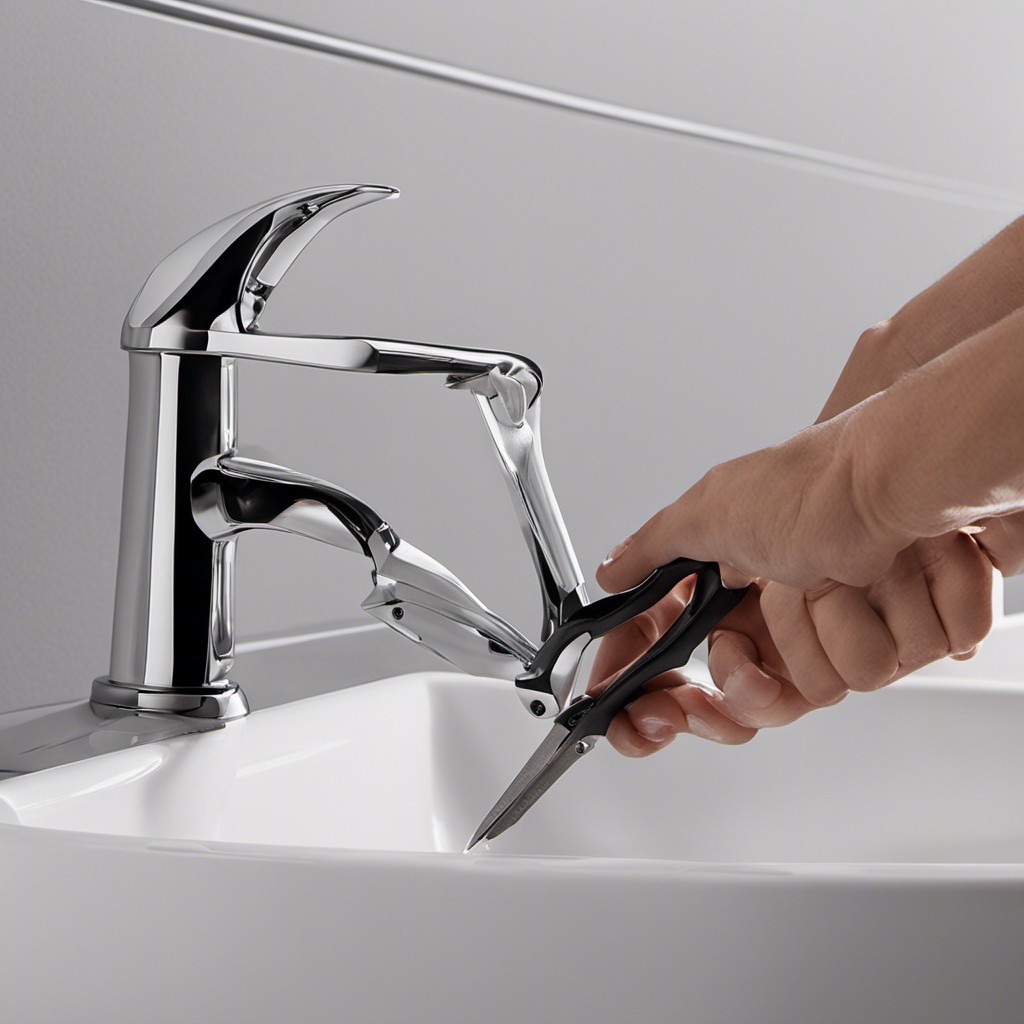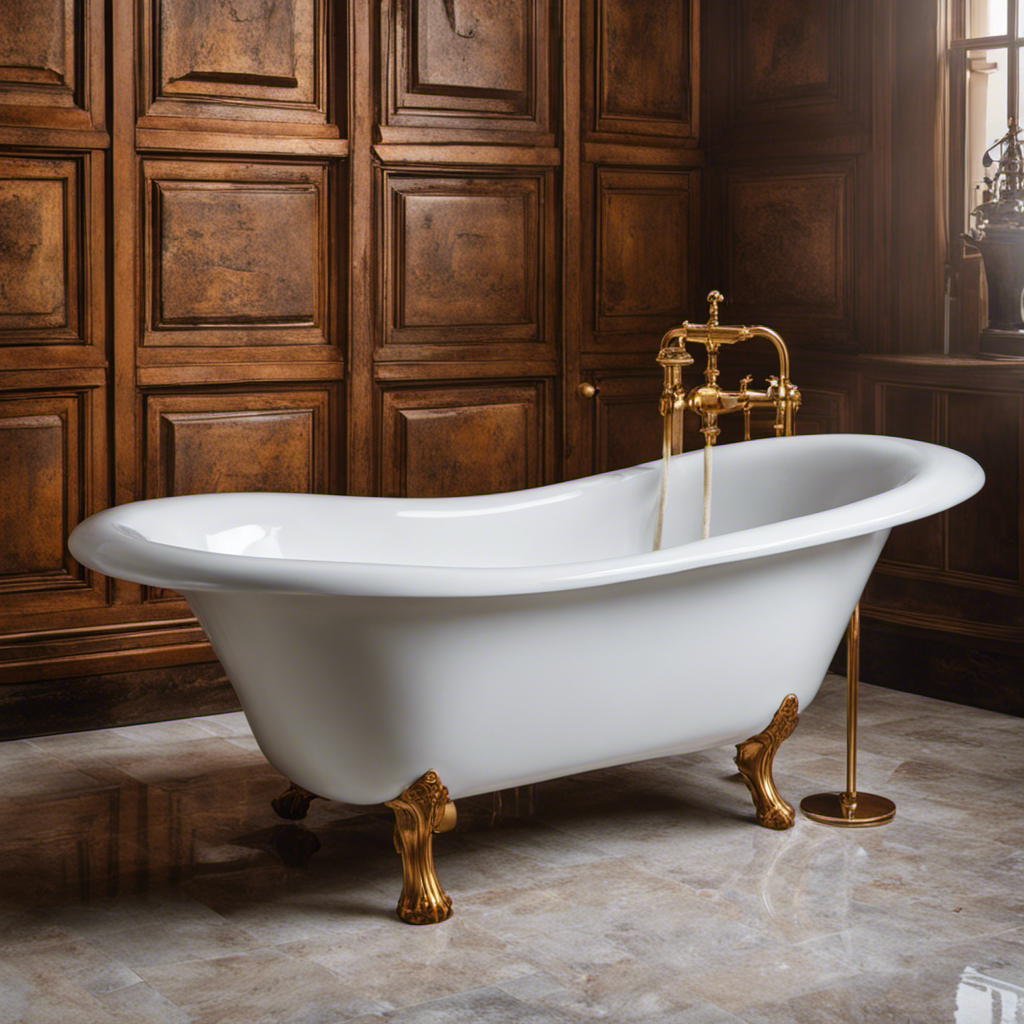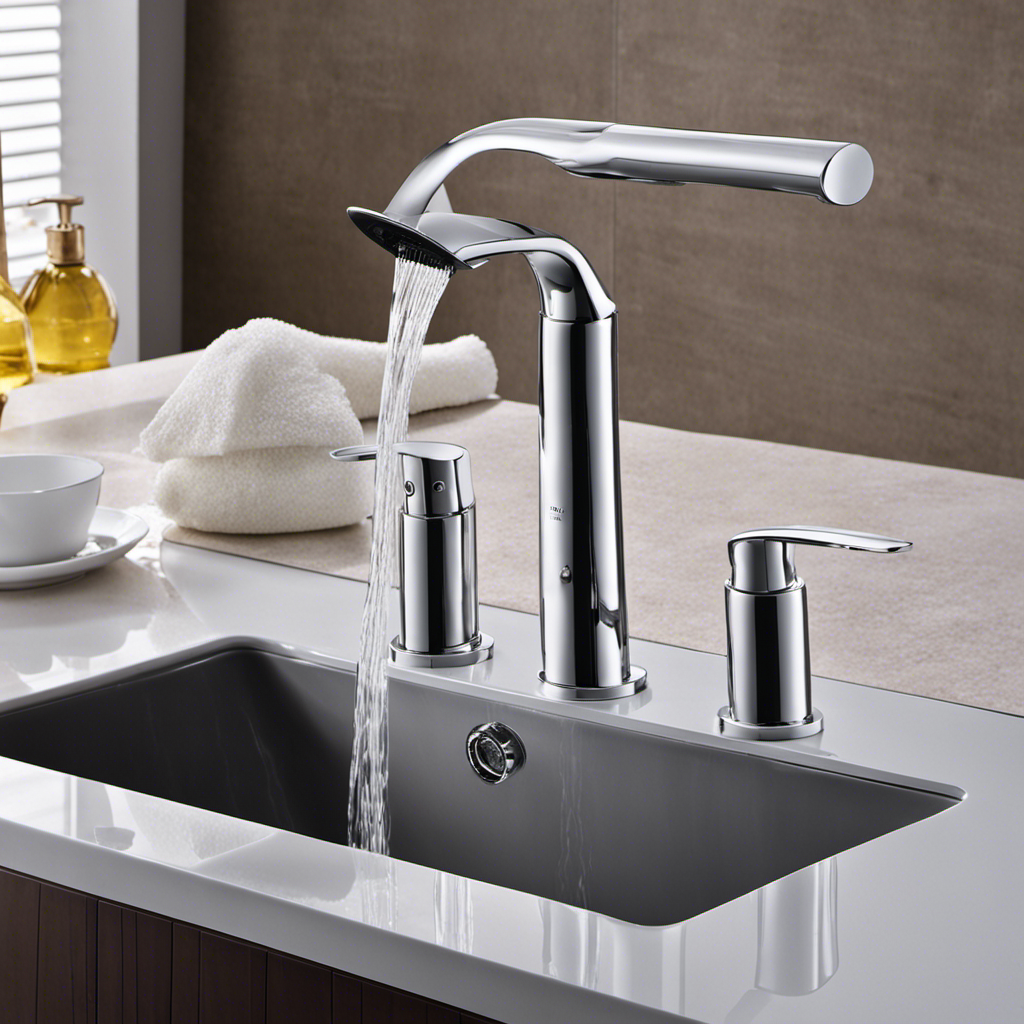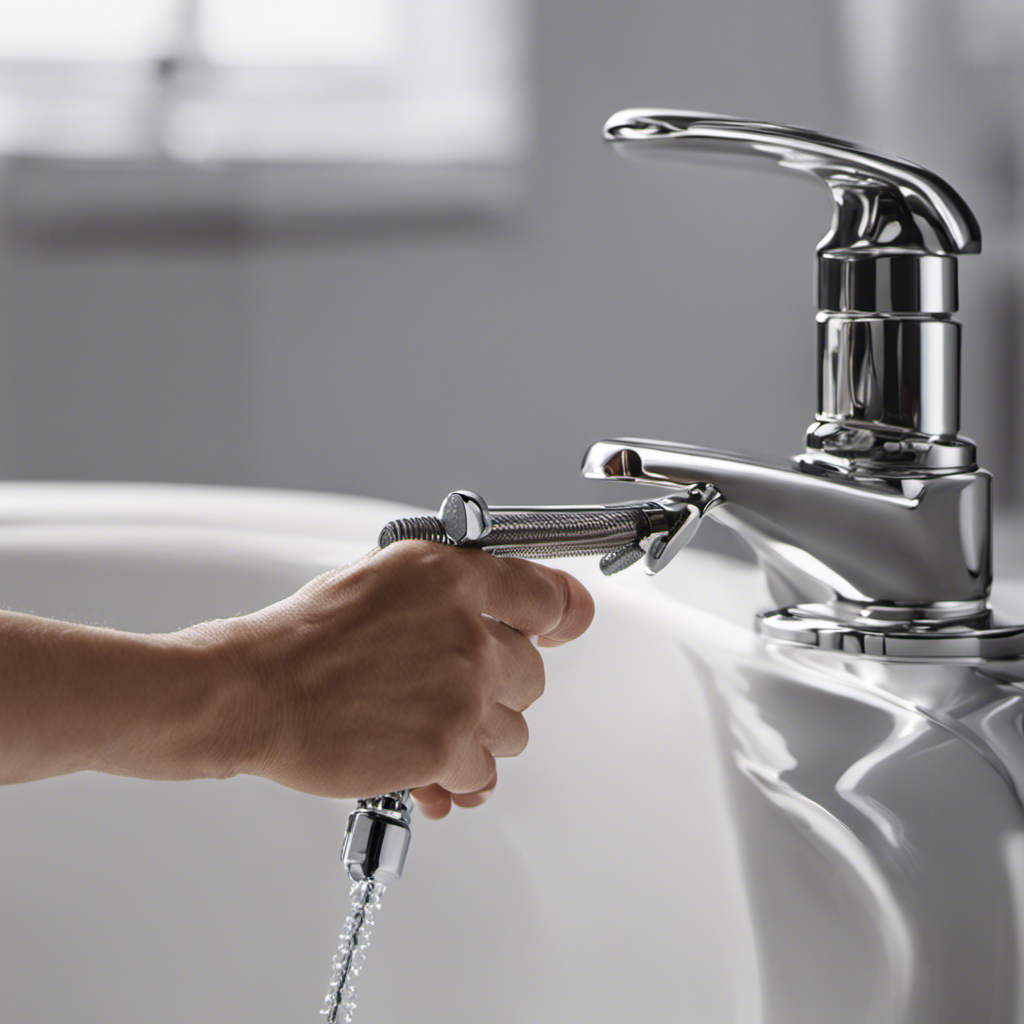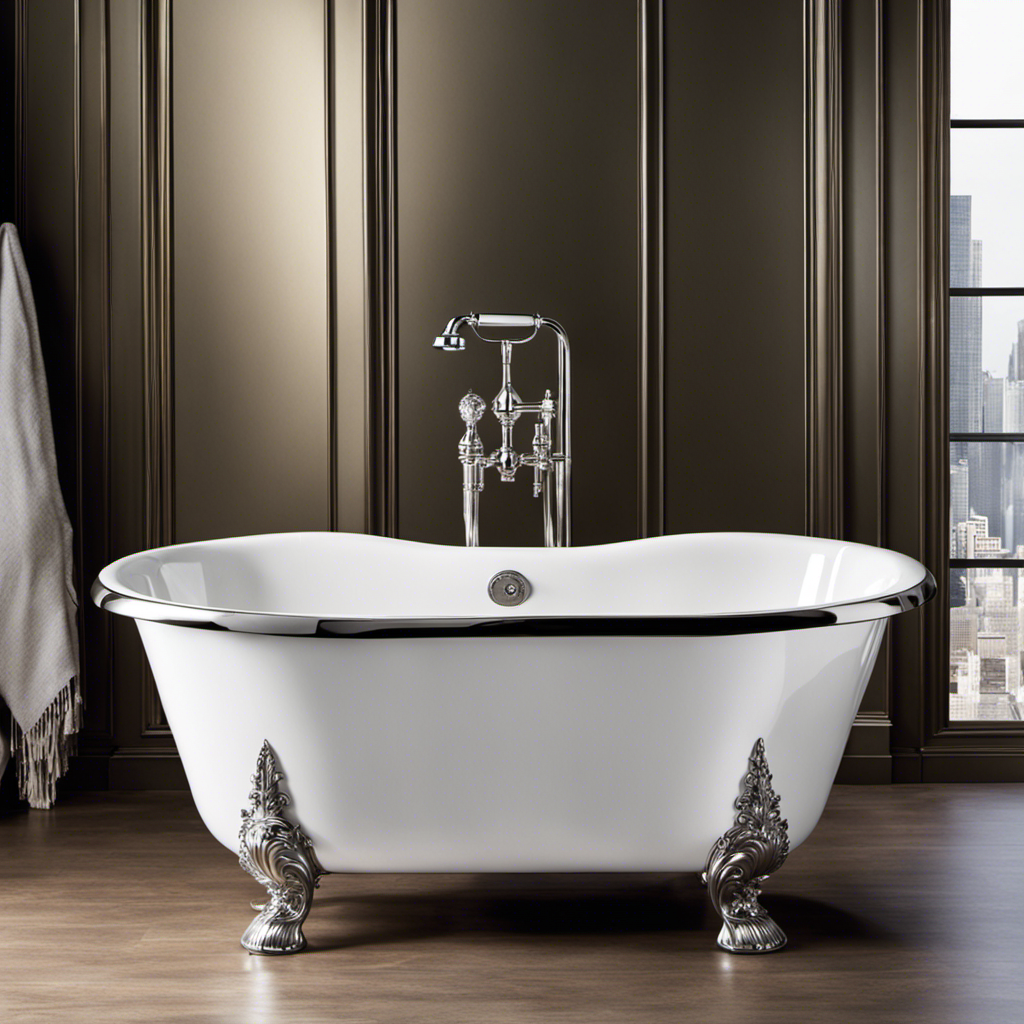Hey there!
Ever struggled with a pesky bathtub stopper that just won’t budge? Well, fear not, because I’ve got you covered!
In this step-by-step guide, I’ll show you exactly how to get that stopper out of your bathtub, no sweat. We’ll dive into choosing the right tools, removing the overflow plate, detaching the trip lever mechanism, and unscrewing the stopper itself.
And don’t worry, I’ll even share some tips on preventing future clogs and issues.
Let’s get started, shall we?
Key Takeaways
- Determine the type of stopper and gather the necessary tools for removal.
- Clean the stopper thoroughly to remove any debris or hair clogging it.
- Use the plunger method or snake method to dislodge clogs in the drain.
- If the stopper cannot be removed or there are other issues, consider removing the overflow plate or seeking professional help.
Choosing the Right Tools
To choose the right tools for the job, you’ll need to consider the size and type of stopper in your bathtub. Proper bathtub maintenance is essential to prevent any issues with the stopper. If you’re experiencing problems with your stopper, troubleshooting is necessary.
Here are the steps to follow:
-
Assess the stopper type: Determine if your bathtub stopper is a lift-and-turn, push-pull, or toe-touch style.
-
Gather the necessary tools: Depending on the stopper type, you may need a screwdriver, pliers, or a bathtub drain removal tool.
-
Remove the stopper: Use the appropriate tool to unscrew or lift the stopper from the drain.
-
Clean the stopper: Inspect for any debris or hair clogging the stopper. Clean it thoroughly using warm water and a brush.
Removing the Overflow Plate
When it comes to removing the overflow plate, there are a few techniques that can be used.
One common method is to unscrew the screws securing the plate to the bathtub. However, it is important to be aware of any potential issues that may arise during the removal process, such as stripped screws or rusty plates.
If faced with such problems, there are alternative solutions. One option is to use pliers to grip and turn the plate. Another option is to use a lubricant to loosen any stuck parts.
Plate Removal Techniques
You can try using a screwdriver to remove the plate from the bathtub drain. Here are some step-by-step techniques for plate removal and troubleshooting.
First, locate the screws on the overflow plate and unscrew them using a screwdriver. Once the screws are removed, gently pull the plate away from the bathtub wall. If the plate is stuck, you can try using a flathead screwdriver to pry it off. If the plate still won’t budge, it may be due to rust or corrosion. In this case, you can use a penetrating oil such as WD-40 to loosen the plate.
Once the plate is removed, you can proceed with plate replacement or further troubleshooting if needed. Now, let’s move on to common plate issues and how to address them.
Common Plate Issues
If the overflow plate is loose or wobbly, it could be due to loose screws or a worn-out gasket. To troubleshoot bathtub stopper issues and ensure proper bathtub drain maintenance, here are some steps to follow:
-
Tighten the screws: Use a screwdriver to tighten the screws on the overflow plate. This can help secure the plate and prevent any wobbling.
-
Replace the gasket: If the plate is still loose, the gasket may be worn-out. Remove the plate and replace the gasket with a new one.
-
Check for damage: Inspect the overflow plate for any cracks or damage. If it is damaged beyond repair, consider replacing it with a new one.
Alternative Stopper Solutions
To avoid using a traditional stopper, consider using alternative solutions such as a drain cover or a drain hair catcher. These alternatives are not only effective but also easy to install and maintain.
Here’s a step-by-step guide on how to use these DIY stopper alternatives:
-
Drain Cover:
Start by cleaning the drain area thoroughly. Place the drain cover over the drain opening, ensuring it fits securely. The cover’s suction cups should adhere to the surface, creating a tight seal. This will prevent water from flowing down the drain while still allowing it to flow freely. -
Drain Hair Catcher:
Clean the drain area and remove any existing hair or debris. Insert the drain hair catcher into the drain opening, ensuring it sits snugly. Its design will catch hair and other debris, preventing clogs and keeping your drain clear.
Both of these alternative stopper materials are affordable and readily available at most home improvement stores. They offer a convenient and effective solution to keep your bathtub drain clear without the need for a traditional stopper.
Detaching the Trip Lever Mechanism
Removing the trip lever mechanism is the next step in fixing common bathtub drainage issues. To do this, you’ll need to follow a few simple techniques.
In this discussion, I’ll walk you through the step-by-step process of detaching the trip lever mechanism and highlight some common issues you may encounter along the way.
Trip Lever Removal Techniques
First, grab a pair of pliers to remove the trip lever from your bathtub.
To troubleshoot trip lever issues, follow these steps:
- Check for blockages: Inspect the trip lever assembly for any debris or hair that may be causing it to malfunction.
- Lubricate the mechanism: Apply a small amount of plumber’s grease or silicone lubricant to the trip lever and linkage to ensure smooth operation.
- Tighten any loose screws: Use a screwdriver to tighten any loose screws on the trip lever assembly and ensure proper alignment.
Regular trip lever maintenance can prevent future problems. Here’s how:
- Clean regularly: Remove and clean the trip lever assembly periodically to prevent buildup of grime or soap scum.
- Inspect for wear and tear: Check the trip lever and linkage for any signs of damage or corrosion, and replace if necessary.
- Adjust the trip lever tension: If the stopper doesn’t seal properly, adjust the tension on the trip lever by tightening or loosening the adjustment screw.
Common Trip Lever Issues
If you’re experiencing common trip lever issues, it’s important to troubleshoot and identify the problem. One of the most common problems with bathtub drain problems is the trip lever not properly engaging or disengaging the stopper.
To troubleshoot this issue, start by removing the overflow plate and inspecting the trip lever mechanism. Check for any loose or broken parts that may be causing the problem. If everything appears to be in working order, try lubricating the mechanism with some silicone or plumber’s grease to ensure smooth operation.
If the problem persists, you may need to replace the trip lever assembly. By addressing these common trip lever issues, you can ensure that your bathtub stopper operates correctly.
Now, let’s move on to the next step: unscrewing the bathtub stopper.
Unscrewing the Bathtub Stopper
To unscrew the bathtub stopper, you’ll need a pair of pliers. Here’s a step-by-step guide on how to remove and replace a bathtub stopper:
-
First, locate the stopper. It is usually located in the drain of the bathtub.
-
Use your fingers to grip the stopper and turn it counterclockwise. If it doesn’t budge, use the pliers to get a better grip.
-
Once the stopper is loose, continue turning it counterclockwise until it comes off completely.
-
Inspect the stopper for any damage or buildup. Clean it thoroughly if needed.
-
To replace the stopper, simply screw it back into place by turning it clockwise. Ensure it is securely tightened.
-
Test the stopper by filling the bathtub with water and checking if it holds.
Using a Plunger or Drain Snake
Don’t forget, when using a plunger or drain snake, make sure to apply steady pressure to effectively clear the clogged drain. Here’s a step-by-step guide on how to use these tools to unclog your bathtub drain.
-
Plunger Technique:
- Fill the bathtub with enough water to cover the rubber cup of the plunger.
- Place the plunger over the drain and press it down firmly to create a seal.
- Push and pull the plunger vigorously to create suction and dislodge the clog.
- Repeat this process several times until the water starts to drain properly.
-
Snake Method:
- Insert the drain snake into the drain opening.
- Rotate the snake clockwise while pushing it forward.
- Keep pushing and rotating the snake until you feel resistance from the clog.
- Once you reach the clog, wiggle and twist the snake to break it apart.
- Pull out the snake and dispose of any debris.
Remember to clean the tools properly after use and consider using gloves for hygiene purposes.
Preventing Future Clogs and Issues
When maintaining your drains, remember to regularly pour boiling water down the pipes to prevent future clogs and issues. This simple step can help keep your bathtub functioning properly and avoid costly repairs.
Here are some other effective ways to prevent clogs and maintain your bathtub’s functionality:
-
Use a drain strainer: Install a drain strainer in your bathtub to catch hair and other debris before it goes down the drain.
-
Avoid pouring grease or oil: Grease and oil can solidify in your pipes, leading to clogs. Dispose of them properly instead of pouring them down the drain.
-
Clean your drains regularly: Use a mixture of baking soda and vinegar to clean your drains and remove any buildup that could cause clogs.
Conclusion
In conclusion, removing a stopper from a bathtub can be a simple task with the right tools and steps. By choosing the right tools, such as a plunger or drain snake, and following the step-by-step process of removing the overflow plate and detaching the trip lever mechanism, you can easily unscrew the bathtub stopper.
But why stop there? Take preventive measures to avoid future clogs and issues. Isn’t it satisfying to know you can handle this problem on your own?
